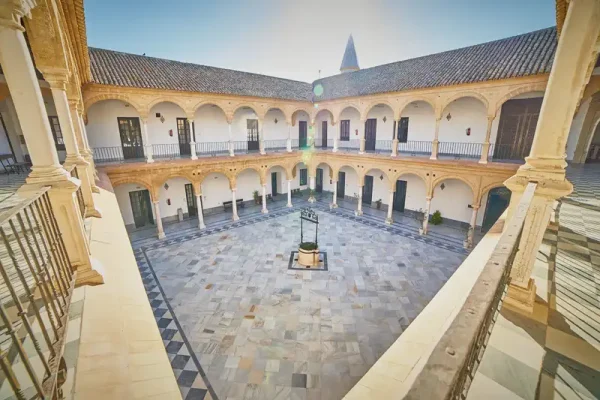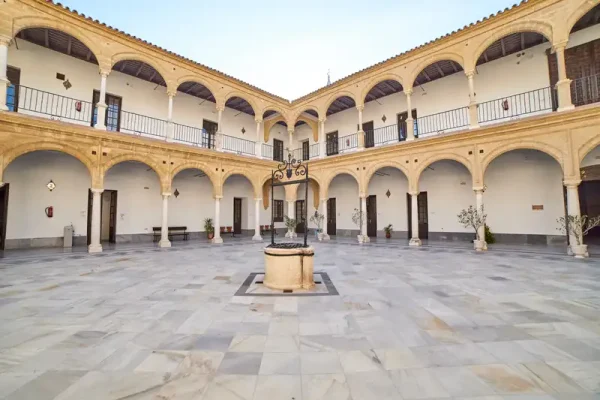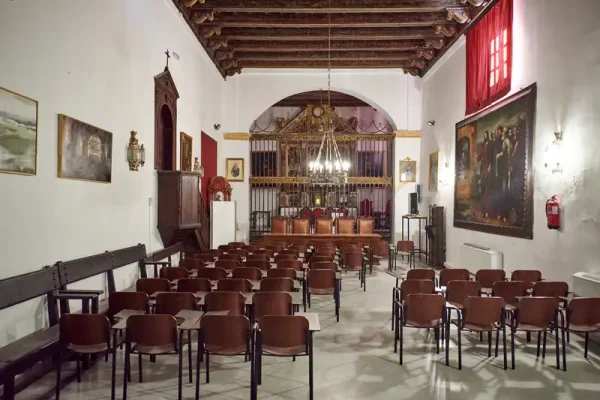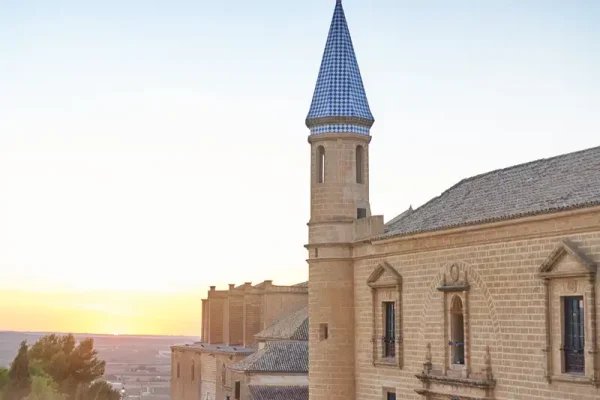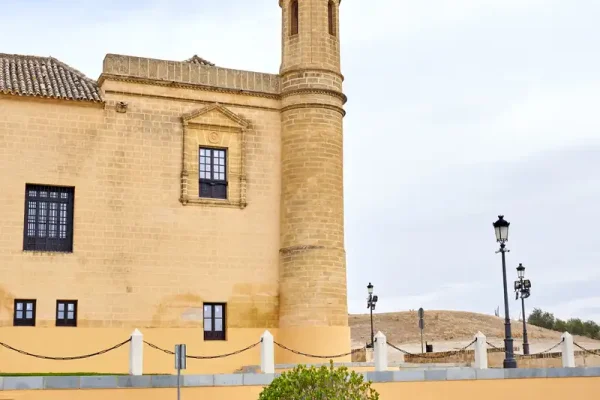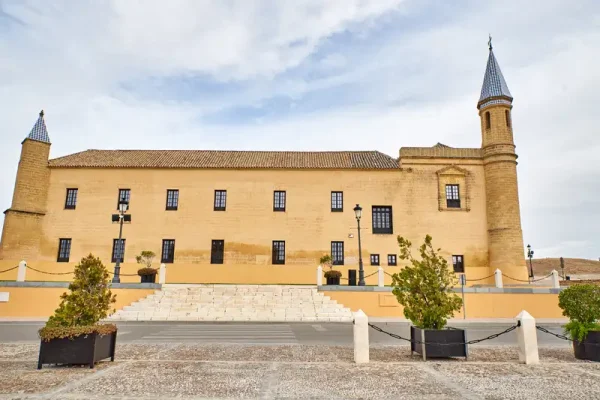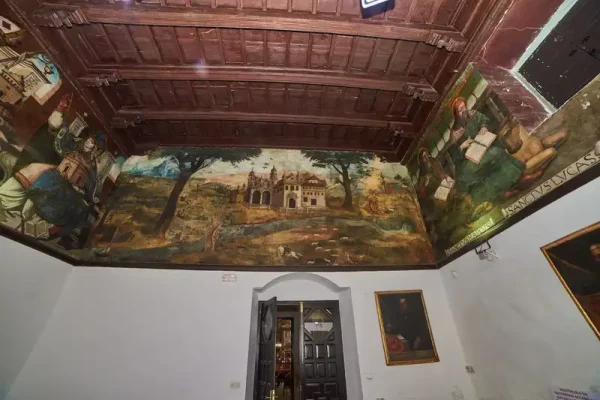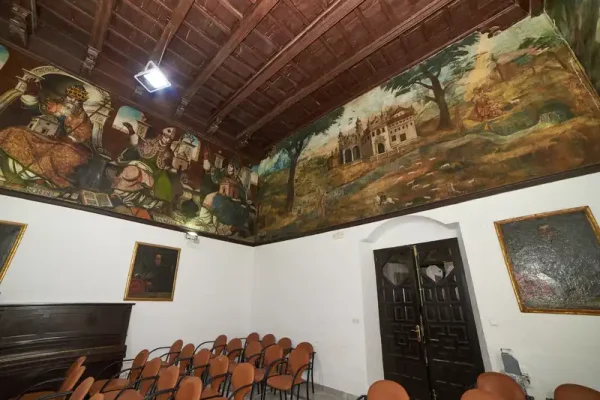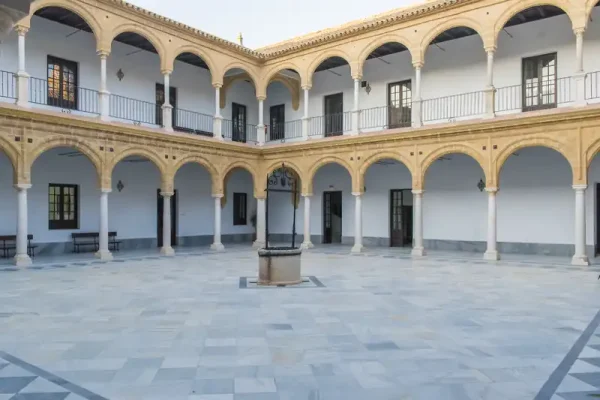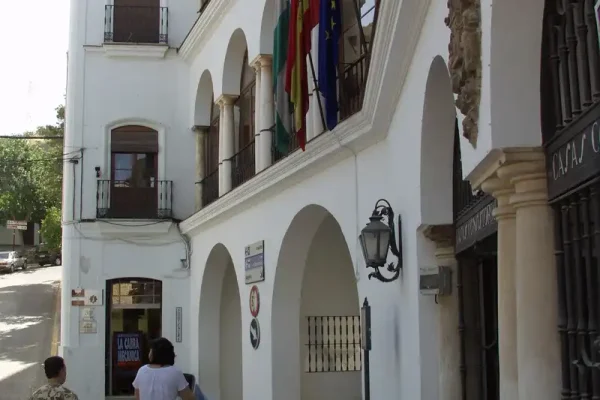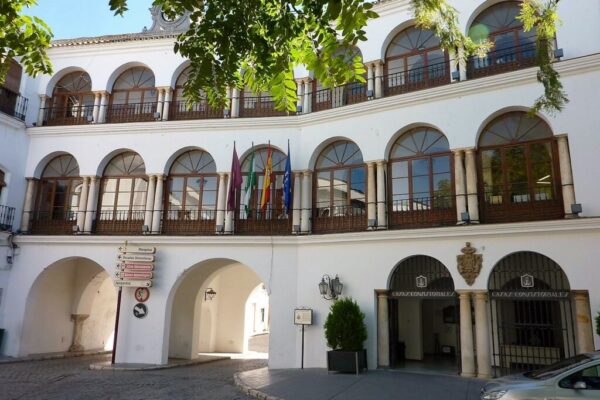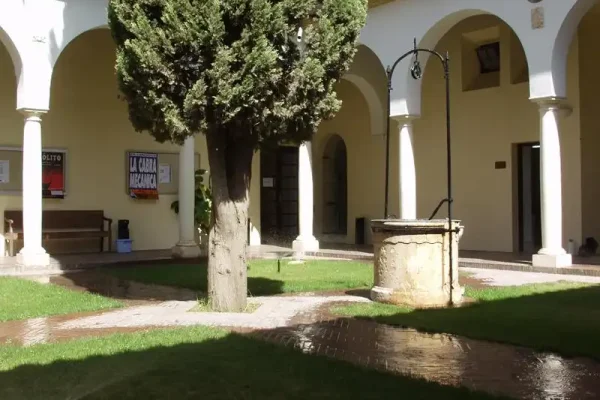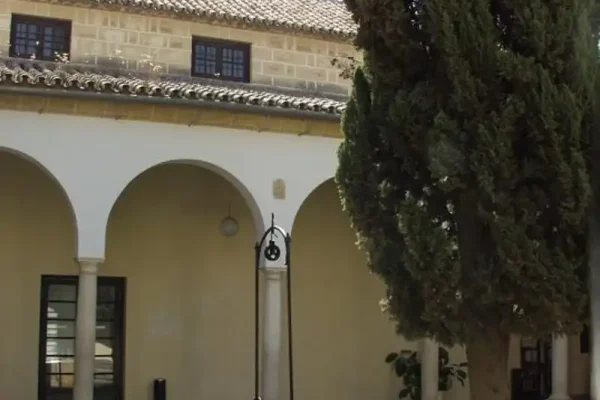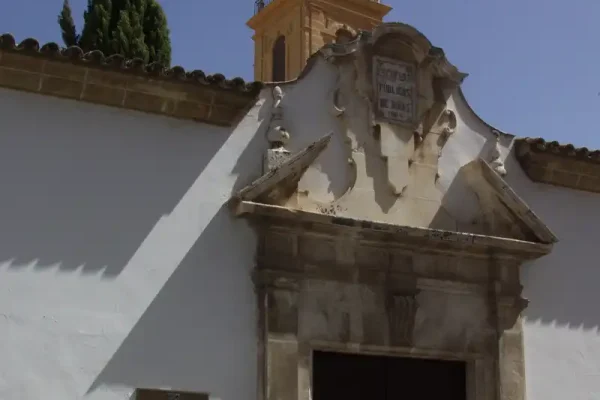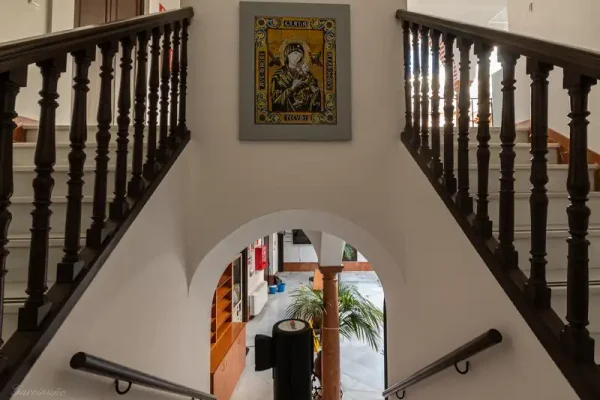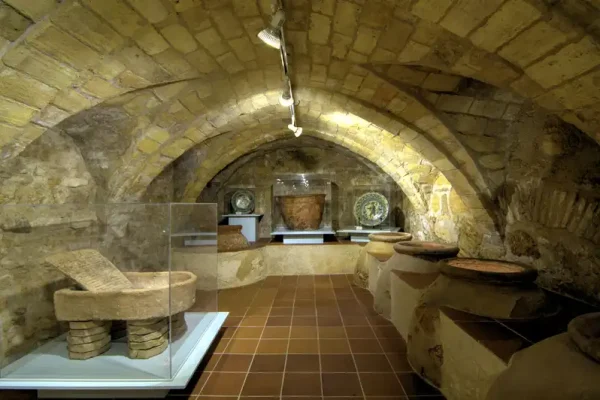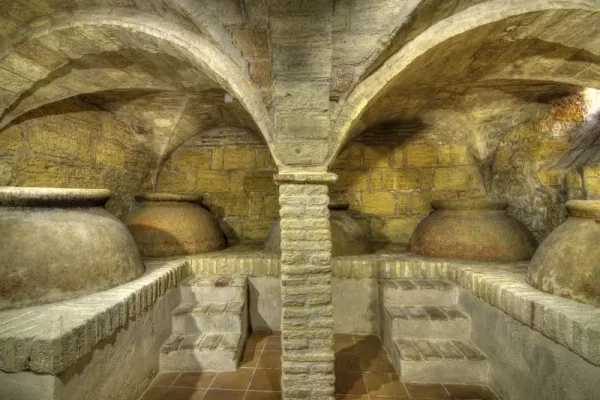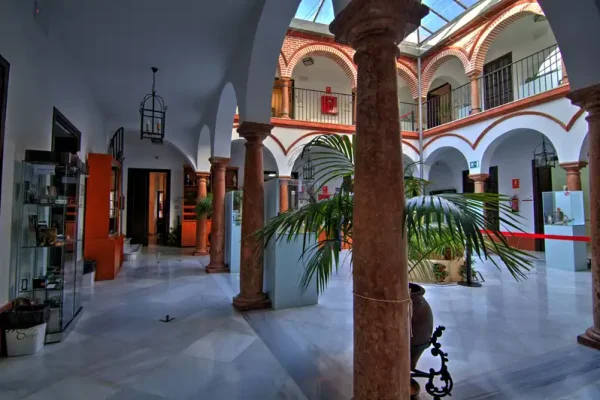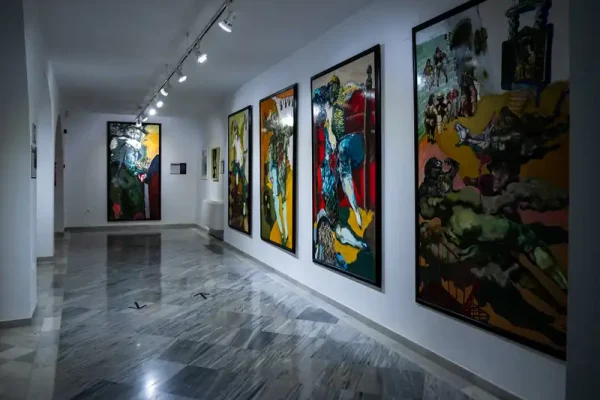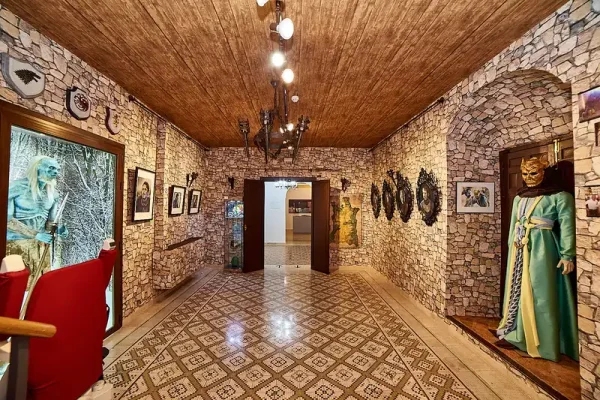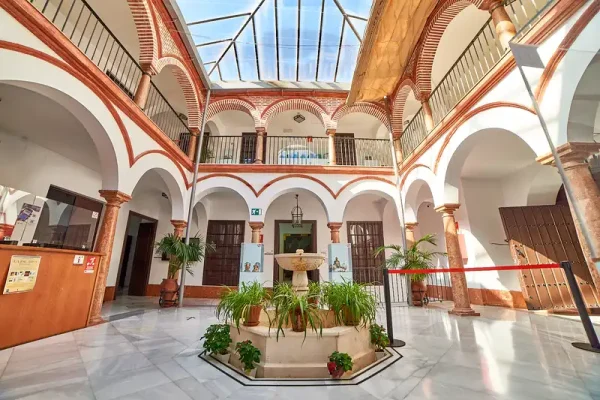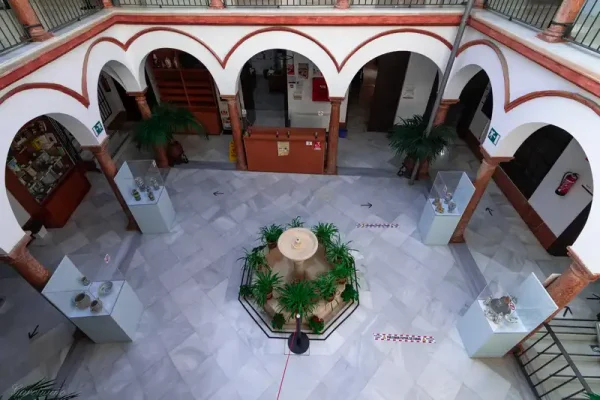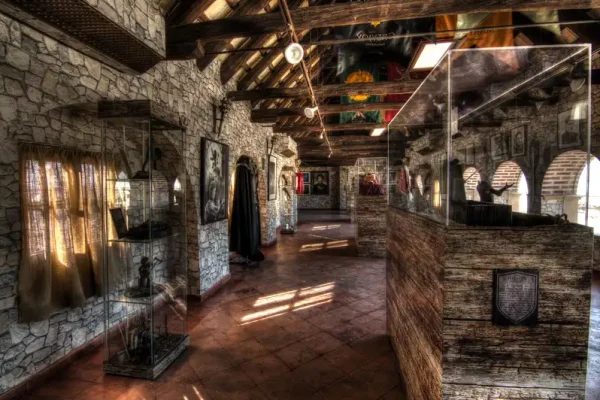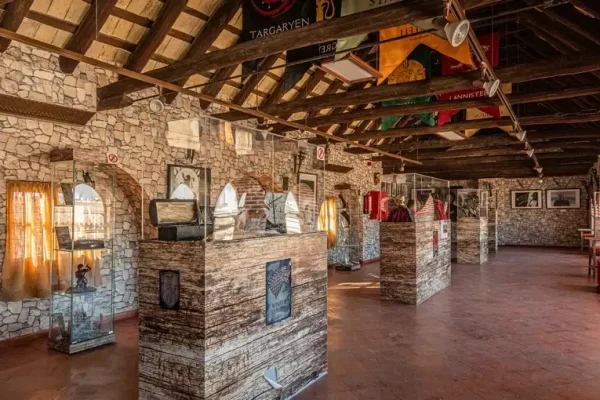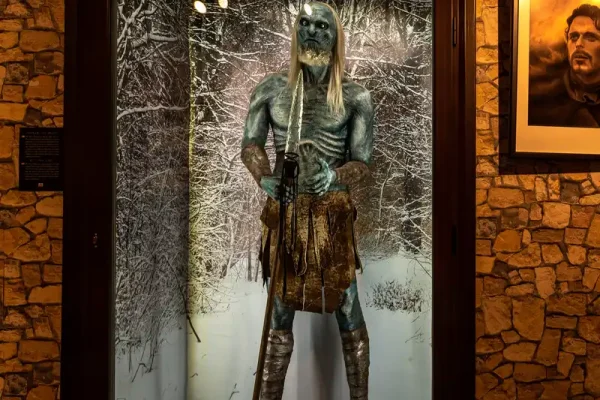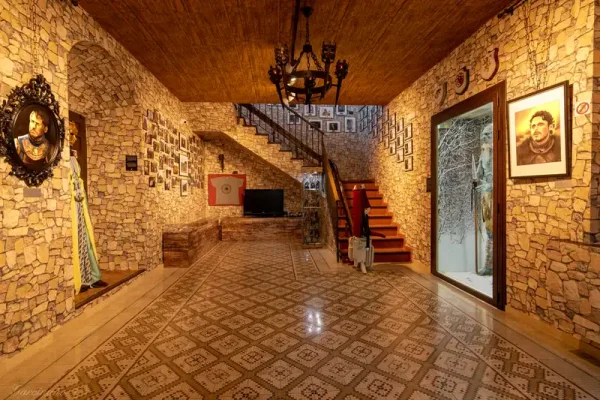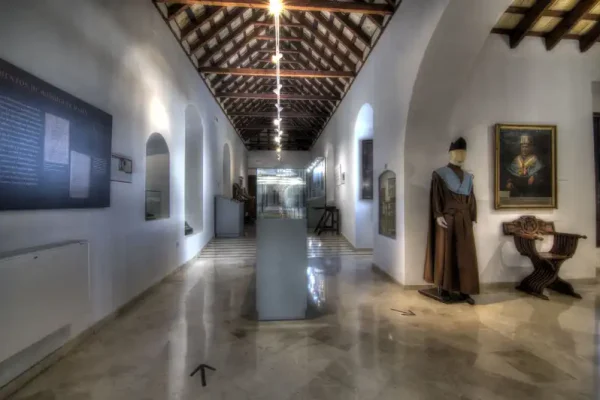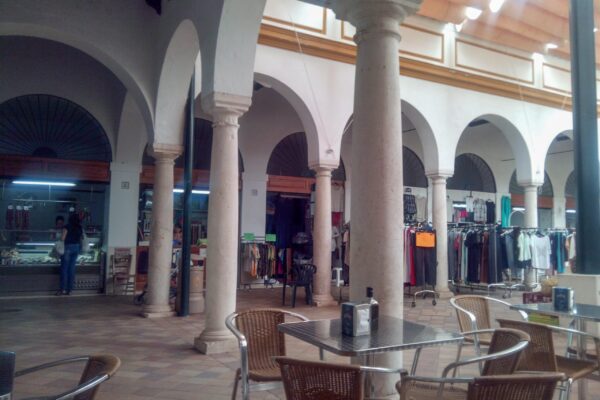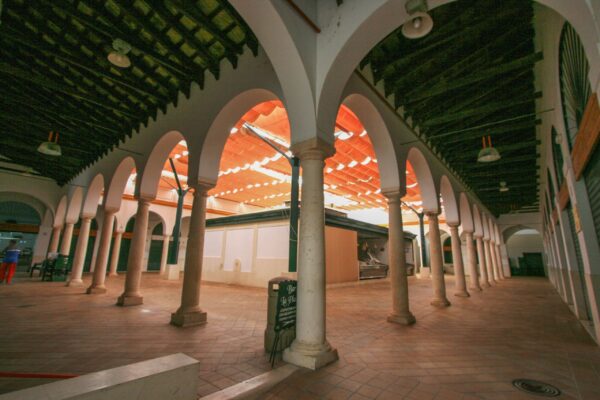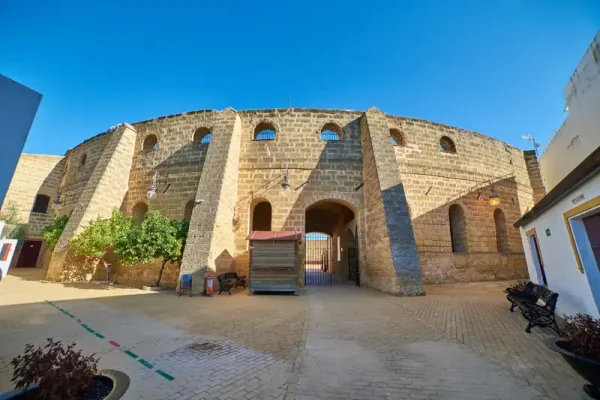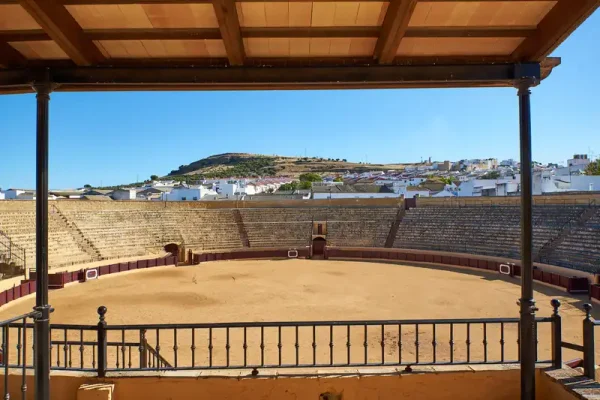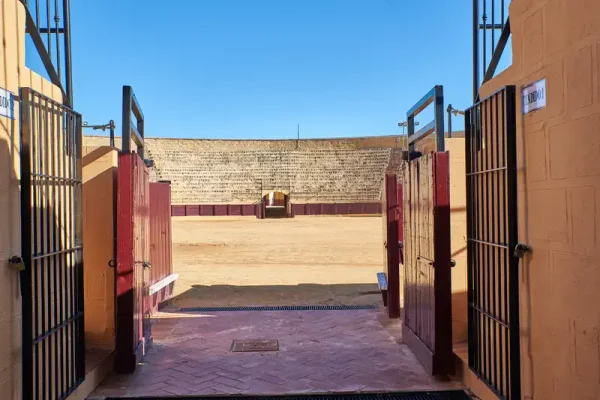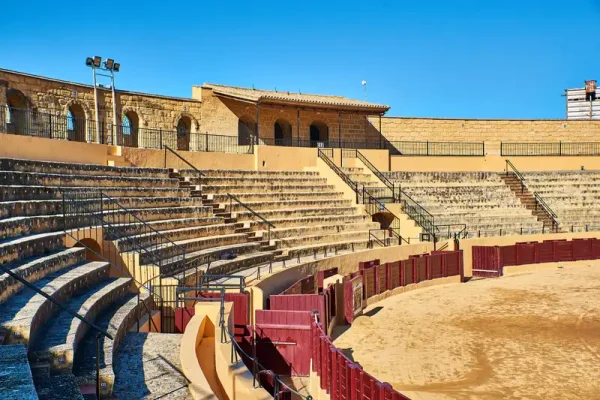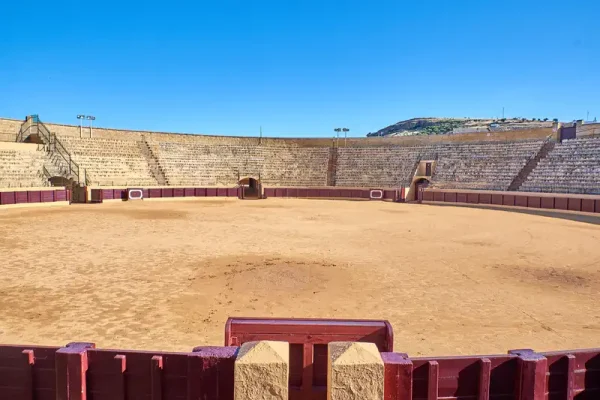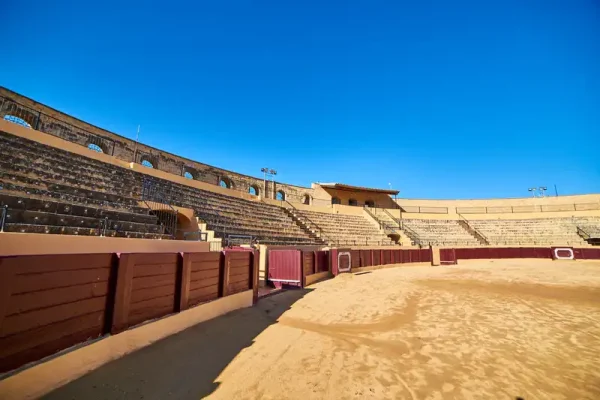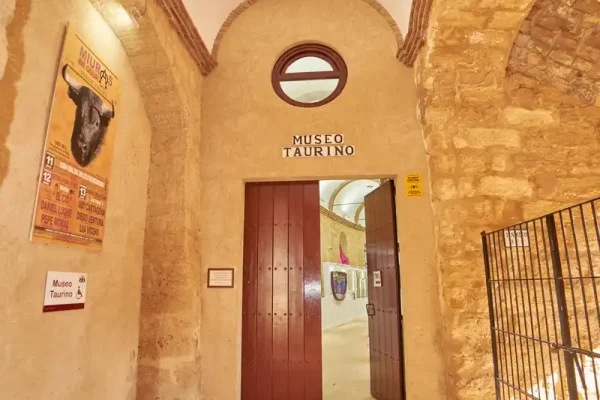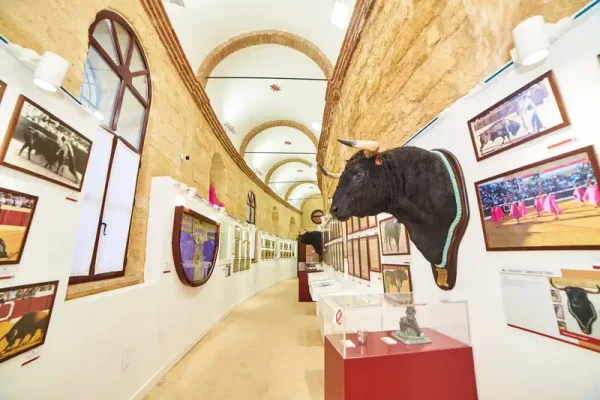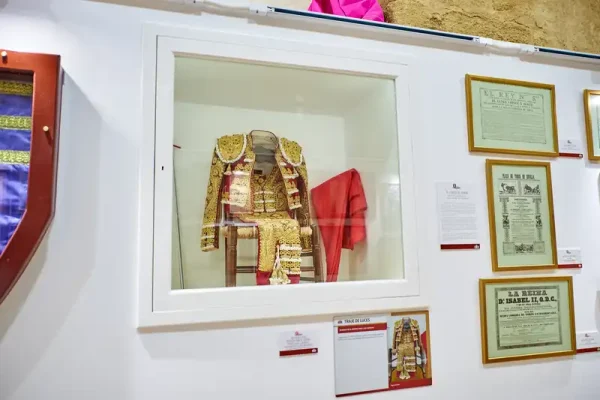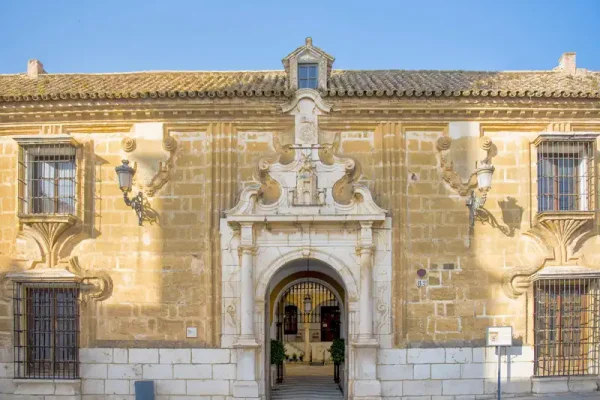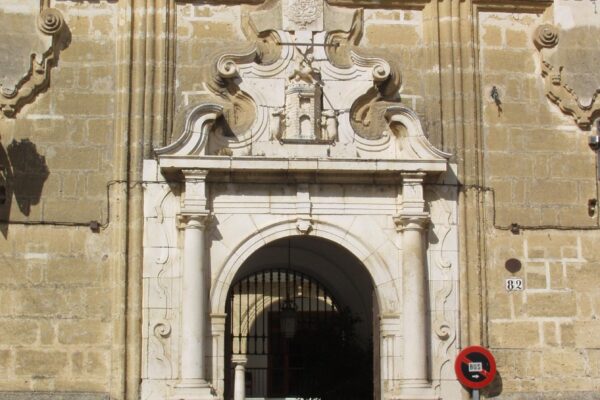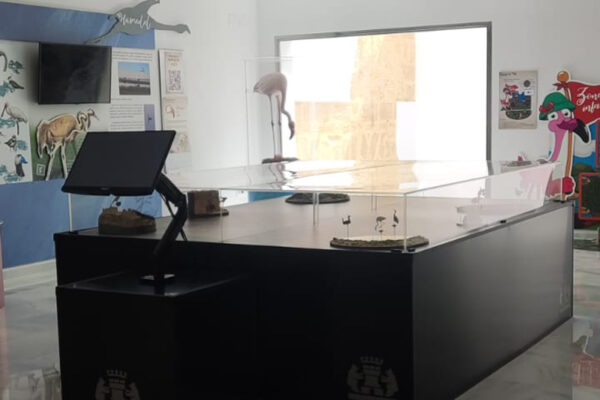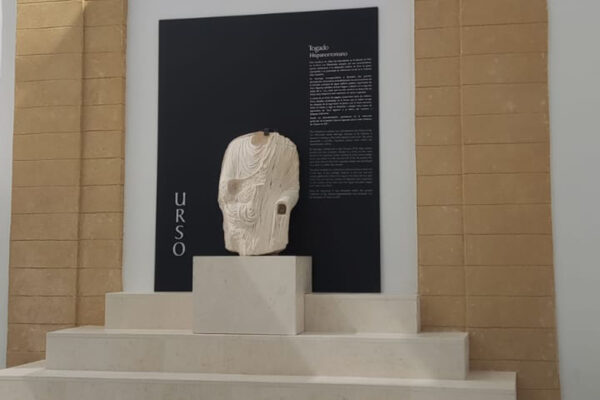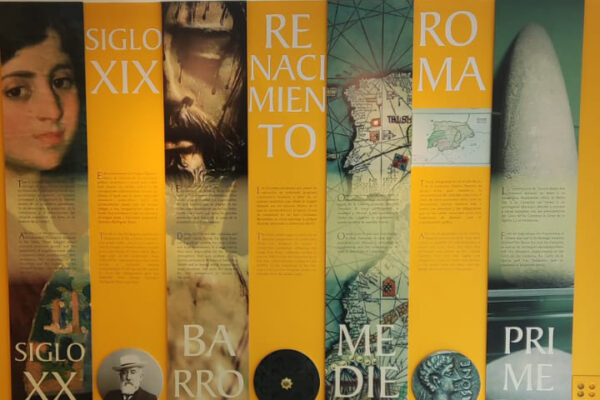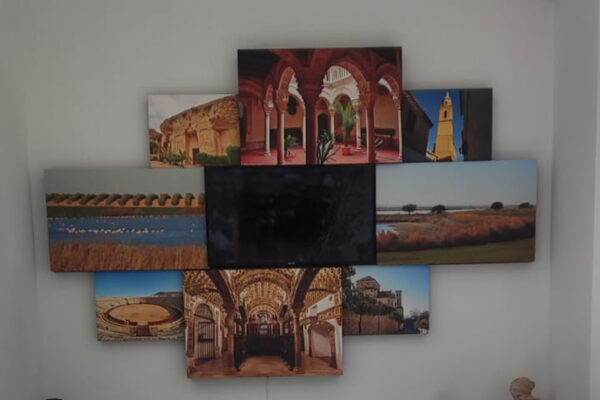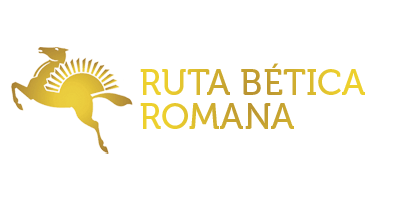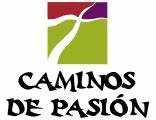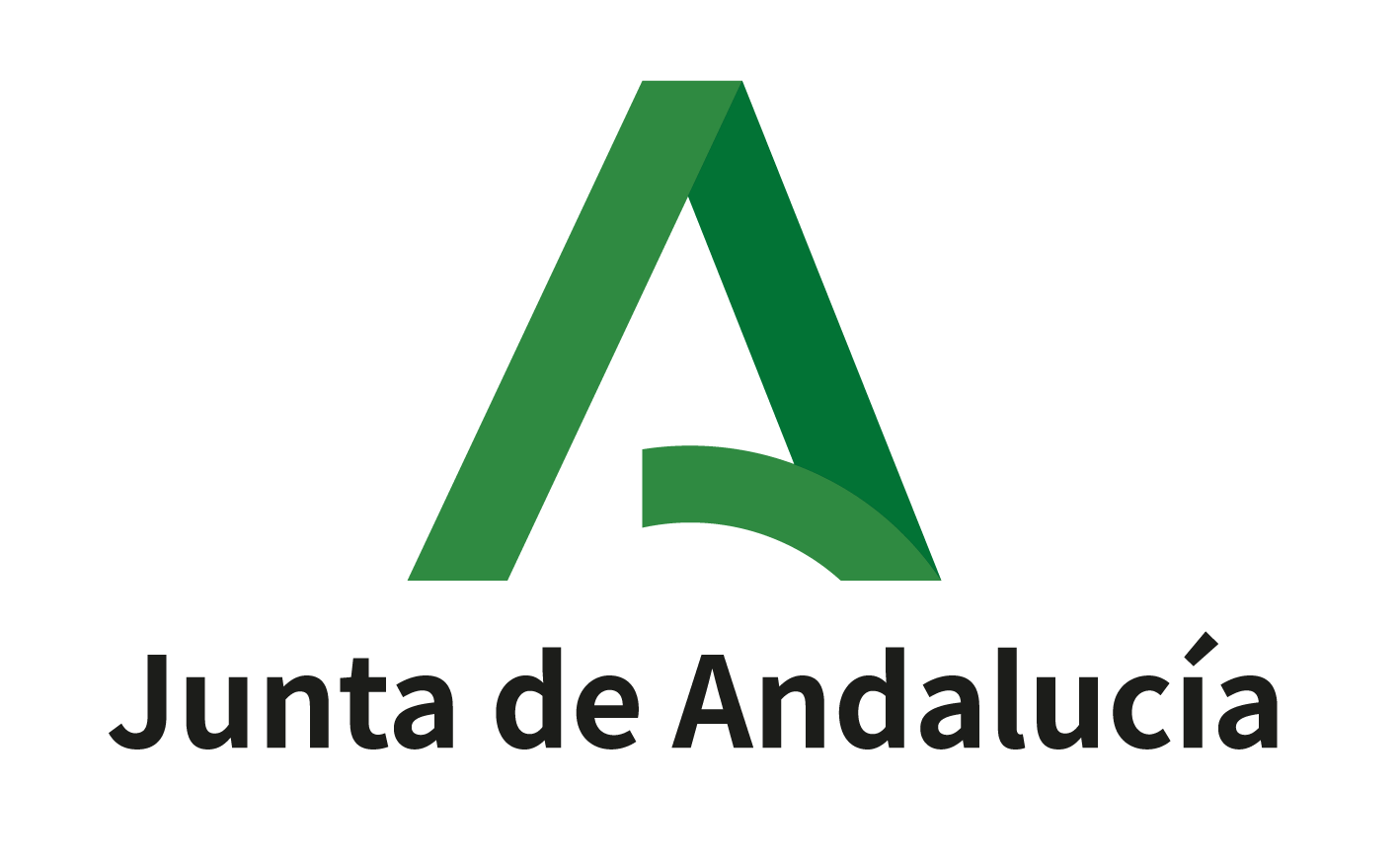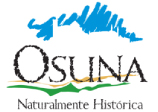


- Old University
- Town Hall. Osuna Town Council
- House of Culture
- Osuna Museum
- Market Square
- Bullring
- Municipal Granary
- Centro de Innovación Turística
Old University
On 10 October 1548, Pope Paul III issued the papal bull ‘In Supereminenti Apostolicae Sedis’, authorising the construction of a General Study in the town of Osuna, dedicated to the Pure and Immaculate Conception of the Virgin Mary, to whom the founder had a special devotion.
For this reason, a rectoral document from 1820 states that it is ‘called the Colegio Mayor y Universidad Literaria de la Inmaculada Concepción de Nuestra Señora’ (Higher College and Literary University of the Immaculate Conception of Our Lady). Thus, the Ursaonian College-University was a pontifical institution, and perhaps this was one of the reasons why it was considered minor.
The request for this authorisation came from Don Juan Tellez de Girón, 4th Count of Ureña and father of the first Duke of Osuna, who wanted to found a college and a university in the capital of his estates, following the model of Alcalá de Henares, where students could obtain degrees that were as valid as those awarded by ‘Bologna, Salamanca, Alcalá de Henares and other general studies, with the same honours and privileges’.
The university never achieved royal recognition, only papal recognition. In his will, the founder urged his son, the future 1st Duke of Osuna, to obtain it, but there is no evidence that this was ever achieved; this is evident when, during a lawsuit in the Council of Castile, the documentation was requested. However, an enormous, luxurious inscription proclaiming this status can still be seen on the left wall at the entrance to the building. The same thing happened with other smaller universities such as Almagro; even the University of Seville, founded by Archdeacon Fernández de Santaella in 1505, did not receive this recognition until 1551, when it was granted by the city council.
On 8 December 1548, the chapel of the building was blessed by Don Sancho Trujillo, Bishop of Morocco and canon of Seville Cathedral, who was also the first collegiate.
The building was financed and endowed exclusively by the aforementioned count, whose family was one of the wealthiest in Spain. It housed fifteen major chairs at the University and eight minor chairs at the College, grouped around the faculties of Theology, Law (Canons and Laws), Medicine and Arts.
The Theology Faculty was the most popular since its foundation and the most attended. Let us not forget that its objective, like that of Alcalá de Cisneros, is to train ‘the leaders of a Church more worthy of Christ’.
As the founder enjoyed very good relations with certain religious orders—Dominicans, Augustinians, Franciscans, and Carmelites—he ensured that the chairs of this faculty were distributed among them.
The Faculty of Medicine always gave theoretical classes as it did not have an anatomical theatre. At one time it was very popular and its classrooms were attended by renowned doctors such as Gudiel and Solano de Luque.
The Faculty of Arts, preparatory to Medicine and Theology, functioned normally as it was structured, with no innovation other than the chair of Mathematics created by Philip II.
Francisco Maldonado was its first rector (1549–1553), hence its current name: ‘Escuela Universitaria Francisco Maldonado’, and Diego Ramírez was the last (1821). Since 1995, the same building, duly renovated and adapted to the needs of modern higher education, has housed the common services and classrooms of the legal and economic area of the University School of Osuna.
The University of Osuna survived until the 1807 reform by Minister Caballero, when it was abolished along with ten other smaller universities, such as the University of Baeza. Its revenues and degrees were added to the University of Seville.
Despite its formal abolition, it continued to function poorly until the arrival of French troops in 1810, when the building was occupied and converted into French barracks. It continued to operate very precariously after the war until 1824, when it was finally closed down.
After many years without operating as such, the University School of Osuna reopened its doors to students in 1993.
Our university has now been offering its services to anyone who wishes to access them for thirteen years. During this time, we have made significant progress through a constant process of consolidation, which has enabled us to grow in terms of both quality and quantity.
The University's main campus, located in a majestic building constructed in the 16th century, is fully equipped and adapted to the requirements of the most modern educational centres. It has information signs in Braille and magnetic induction loops in the auditorium and chapel, and houses the law and economics classrooms and common services, such as the Registrar's Office.
The University College also has an annex building, located a few metres from the main campus, where the nursing programme classrooms are located.
Among the many services and advantages offered by the University College, we highlight:
- Own scholarship system, fully compatible with general calls for applications.
- Transport routes subsidised by up to 50%.
- Internships arranged with a large number of companies and organisations.
- Support classes and personalised tutoring.
- Small groups of students.
The Francisco Maldonado School of University Studies in Osuna is affiliated with the University of Seville.
The current range of courses on offer includes degrees in Finance and Accounting, Labour Relations and Human Resources, Nursing, Physiotherapy, Primary Education, and a double degree in Finance and Accounting and Labour Relations and Human Resources.
For further information about the University School of Osuna, please click on the following link: www.euosuna.org
Town Hall. Osuna Town Council
Dating back to the 16th century, although extensively rebuilt inside. The coat of arms of the Ducal Town stands out on its façade.
Opening hours: Monday to Friday from 8:00 a.m. to 3:00 p.m. Closed on public holidays. Free admission.
It was built over the arch of the Puerta de Teba gate around 1533.
The whitewashed walls are broken up by the double rows of holes in the balconies: first, a series of arches supported by paired double columns and covered by overly immediate carpentry; then, remnants of old balconies opening onto the square, two long, wide continuous balconies whose slabs are held in place by metal struts, supporting pink pedestals with carved heads on which rest the threads of the duplicate holes that penetrate the wall; then, a little further down and forming the corner of the block, with its sloping buttress, another house in which the balconies cease to be balconies and become galleries with wrought-iron railings. These latter domestic architectures are typical of the 17th century, buildings that lighten their façades to play with shadows and to look out and show themselves to the city, to contemplate and be contemplated from the square.
Under the arcades of the Town Hall there is a version of the coat of arms of Osuna. As is common in symbolism and heraldry, the coat of arms of Osuna is recreated in various forms. Whatever its appearance, there are two components that are always present: a tower and two chained bears. The tower, if it is a tower drawn with ashlars and not the simplest expression of a fortress, a castle or a walled city, usually has three turrets crowning it; behind them, sometimes, standing upright in her watchtower, a woman with bare breasts appears; some have interpreted this female figure as the presence of the old goddess Cana; others propose that the tower's sole inhabitant is a creature reminiscent of the enigmatic winged sphinx with its disturbing half of a naked maiden. The bears are always symmetrical and always with a chain that attaches them by the neck to the architecture.
House of Culture
The Casa de la Cultura was established in the former Jesuit convent, with the convent church located across the street. The monastic space, consisting of a large central cloister and a series of rooms or outbuildings opening onto this space, was put to good use.
You enter directly from the street into the cloister, with the offices on the opposite side from the entrance. The best known features are its Assembly Hall, which is used for all kinds of public events, and its Municipal Library.
The Casa de la Cultura is the cultural hub of the city and always has temporary exhibitions, as well as all kinds of activities throughout the year.
Osuna Museum
The Osuna Museum is located in the former Palace of the Arjona y Cubas Brothers, an 18th-century building that housed the Local Agricultural Chamber for much of the last century. The visit begins in the cellar of the palace, where we can find a series of earthenware jars that were used to store wine, oil and food such as meat and fish. Continuing the visit, we will enjoy the following permanent rooms on the ground floor, next to the two temporary exhibition rooms: the Rodríguez Jaldón collection and the Rodolfo Álvarez Santaló collection.
On the first floor, you will find: Collections from the municipal archive, Nobility and Power, the former photography studio of the Ruíz family, collections from the Old University, the Primitiva Ledesma printing press, the ‘El Bombo’ hat shop, and the Ice and Fire Room, dedicated to the Game of Thrones series, as part of the fifth season was filmed in our town in 2014.
The Osuna Museum is adapted and accessible, as it has a lift to the first floor, as well as a stair lift, and the information panels are in several languages, including Braille. The visitor service desk and the auditorium are equipped with magnetic induction loops.
Market Square
Plaza Mayor. Free admission.
The former Convent of San Francisco, known as the Convent of Madre de Dios de Osuna, was the first of the foundations established within the domain of the House of Osuna in Andalusia.
In 1504, Inés Chirino, widow of Mayor Luis Pernía, donated the Church of La Madre de Dios, located among the houses inhabited by the religious of the Order of Saint Francis, so that they could found convents.
In 1551, it was one of the first Houses of Study in the province, due to the existence of the University and the protection of the Dukes.
In 1943, the building suffered a fatal collapse, but fortunately the main altarpiece was saved and later acquired by the Franciscans of San Buenaventura in Seville.
It is currently the site of the food market, with only the cloister remaining, which is where the different stalls are located. The sculptures and furnishings of San Francisco are scattered throughout the different churches of Osuna.
Bullring
Designed by Seville architect Aníbal González, construction began in 1902 with popular participation.
It was inaugurated on 13 May 1904 to transfer the bullfighting festivities that were previously held in the town squares. It was designed according to the layout that was becoming popular at the time: arena, barrier and alley. It was built on two concentric walls with stones extracted from Las Canteras and the old Iberian wall, and was subdivided into eight sectors marked by eight original entrances. In the middle of the ring facing the bullpens, there is a vaulted, earthen tunnel reminiscent of the oval bowels of the amphitheatre in Itálica.
The arena, a circle almost forty-eight metres in diameter, is one of the largest on the peninsula. The stands have a capacity of six thousand five hundred.
The bullring also has a Bullfighting Museum dedicated to the history of the bullring and bullfighting. The Bullfighting Museum of Osuna is adapted and accessible, as there are no architectural barriers and the signs are in Braille. The visitor service desk is equipped with magnetic induction loops.
It has been the privileged setting for several television commercials, short films, photo shoots and film shoots, the most important of which was part of the fifth season of the prestigious American series ‘Game of Thrones’ in 2014.
Municipal Granary
18th century. Town granary, courthouse, recruitment centre, former hospital and current retirement home. Only the courtyard is open to visitors.
This space has had a long and eventful history. At the beginning of the 16th century, its site was occupied by a brothel and a tavern located in the neighbourhood. In 1608, the brothel was moved to the outskirts of the town and a theatre was built in its place. When theatrical performances were banned in 1731, the town council acquired the property to build the Pósito granaries.
After serving as a grain warehouse, court, military recruitment centre and hospital, it now houses a retirement home. However, its initial purpose was to serve as granaries for the Pósito. As stated on a plaque on the façade, the building was completed in 1779.
The works were directed by Antonio Martín, master builder, and designed by Pedro Manuel Godoy. A total of 177,937 reales and 16 maravedís were spent on completing the project.
The façade is organised into three sections, giving way to a narrower central section in which the sepia-coloured stone doorway is inserted, made from stone brought from the neighbouring town of Estepa.
At the top of the cover is the municipality's coat of arms: two bears chained to a tower topped by a sphinx, lion or winged horse, half animal, half human.
The right-hand side of its façade is topped with an elegant sundial.
Inside, only the courtyard remains, featuring a series of arcades supported by columns on two of its four sides.
Centro de Innovación Turística
The Tourism Innovation Centre is located in the Plaza Mayor, on the site of the former Convent of San Francisco. Inside, in addition to the Tourist Office, it houses various exhibition rooms which visitors can access free of charge to learn more about the town of Osuna through new technologies.
In the ‘Osuna through time’ room, visitors can discover the history of Osuna and its evolution over time, as well as learn about the different customs and traditions of the inhabitants of our city.
In the ‘Natural Heritage’ room, you can learn more about the different ecosystems and habitats of the various birds that live in Osuna, soaking up knowledge about the rich natural heritage of our town.
Finally, the Ducado room provides visitors with information about the Dukes and Duchesses of Osuna and their great patronage of the arts.
The Osuna Tourism Innovation Centre is an adapted and accessible centre, equipped with a lift and platform lift, texts in several languages, including Braille, audiovisuals in several languages, subtitles and sign language, as well as magnetic induction loops.

